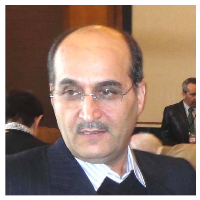Adaptation of Morphotectonic Indices with Seismic Centers in ZagrosNorthwest (Sirvan and Qarahsu Basins)
The land of Iran has undergone major orogenic activities in different geological periods. The effects of these orogenic movements during the Quaternary period have led to a large number of young and dynamic faults. The movements of the earth floors along these ruptures have been associated with major environmental changes in the regions, and these movements and the resulting changes have continued to the present day. In the meantime, the neo-tectonic structure studies the geological, vertical, and horizontal movements of the earth's crust that occurred in the recent geological past and may continue to this day. The range of mountains up to the movements of individual faults (dimensions of several kilometers). The effects of new construction activities, directly and indirectly, affect the shapes of the earth's surface and in addition to creating different shapes and forms, they also control their shape and position. Therefore, due to the effect of neoplastic factors on the formation of land surface shapes, in recent years, neoclassical factors have been significantly proposed as one of the major tools in determining how landforms in regions evolve. According to the above cases, the purpose of the present study is to evaluate the tectonic activity in the northwestern Zagros with an emphasis on the Lat index to achieve the seismicity of the region in the form of catchments. In addition, the present study attempts to evaluate the relationship between the seismicity of these basins and morphotectonic indices analytically.
In the present study, in order to evaluate the tectonic status of the studied basins from the digital model of 30 m altitude SRTM, topographic maps 1: 50,000, 1: 100,000 maps of the region as well as information about the epicenter of earthquakes that occurred in the region during the years 1900 to 2018, were used as the main data collection tools. Also, ArcGIS software (in order to extract basins and prepare final maps) and SPSS (in order to perform calculations related to indicators) were used for the analysis of the data. This research has been done in 3 stages. In the first stage, the seismicity of the basins has been evaluated using the location of seismic centers. In the second stage, the tectonic status of the basins has been investigated using 8 geomorphological indicators. Using the correlation index, the relationship between the tectonic activity of the basins in terms of different indices and the epicenters of the earthquakes has been evaluated. In fact, the assessment was that first the basins were ranked in terms of the number of seismic centers, and the basins with the highest number of seismic centers were ranked first. Also, based on the results obtained from each index, each basin was given a rank. Finally, the correlation between the rank of each basin in terms of the number of seismic centers and their rank in terms of geomorphological indices were evaluated.
The seismicity of the studied basins showed that from 1990 to 2019, 131 earthquakes with a magnitude of more than 3 Richter occurred, of which 7 earthquakes were between 3 and 4 Richter, 114 earthquakes were between 4 and 5 Richter, and 8 Earthquakes were between 5 and 6 Richter. One earthquake was between 6 and 7 Richter and also 1 earthquake was more than 7 Richter (earthquake from the herd on November 12, 2017). Also, the results indicated that among the studied basins, the Zemkan basin with 36 earthquakes (including seismic from the herd) and the Alvand basin with 31 earthquakes, had the highest number of seismic centers. In this regard, they are considered as active tectonic basins. Also, the evaluation of the tectonic status of the basins in terms of geomorphological indicators indicated that in terms of inverse topographic symmetry index (T) and drainage basin asymmetry index (AF), the Razavar basin was the most active basin. In terms of the hypsometric integral index (Hi) and longitudinal river gradient index (SL), the Merg basin was the most active basin. In terms of basin shape indices (Bs), river sine (S) and branching ratio (Br), Jigran, Leila, and Gavarod basins had more active tectonic status, respectively.
The results of the seismicity assessment of the basins showed that from 1990 to 2019, among the studied basins, the Zemkan basin with 36 earthquakes (including seismic from the herd) and Alvand basin with 31 Earthquakes had the highest number of seismic centers. In this regard, they are considered as basins with active tectonic status. Also, the results of the Lat index showed that Gheshlagh, Razavar, and Qarahsoo basins with an average score of 1.75 had the lowest average score and were the most active basin. The Alvand basin with an average of 2.25 points had the highest average score and the lowest activity. In the present study, using correlation, the relationship between the tectonic status of basins and earthquakes in the region was evaluated. The results of the evaluation indicated that there was no relationship between the number of earthquakes and the tectonic condition of the basins in terms of different indicators. In fact, except for the drainage density index of the basins, which had a correlation coefficient with the number of earthquakes in the basins (0.583), other indicators had a coefficient of less than 0.5. Therefore, using the number of earthquakes, it is not possible to assess the tectonic status of the basins.
- حق عضویت دریافتی صرف حمایت از نشریات عضو و نگهداری، تکمیل و توسعه مگیران میشود.
- پرداخت حق اشتراک و دانلود مقالات اجازه بازنشر آن در سایر رسانههای چاپی و دیجیتال را به کاربر نمیدهد.



